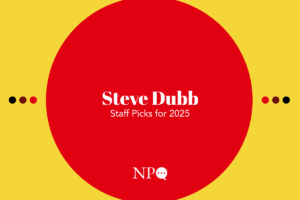
Financial exploitation is killing America’s nursing home residents and the US nursing home system stands at a critical point to address it. This crisis is driven by three interconnected forces that have created a perfect storm for elder care: The commodification of elder care through what one investigator termed the “gray gold” phenomenon, equity firms’ aggressive entry into the care field, and the ongoing impact of the COVID-19 pandemic.
Together, these forces exposed and exacerbated foundational flaws in a system meant to protect our most vulnerable citizens—and the path forward requires acknowledging how those forces have undermined the fundamental mission of nursing homes. Only by understanding and addressing the commodification of care, reining in predatory financial practices, and building post-COVID-19 resilient care systems can nursing home residents be protected. In an aging United States, the lives of millions of elderly Americans are at stake.
How Nursing Homes Became Profit Centers
To understand how this crisis unfolded, we must first examine how elder care became a market commodity. Timothy Diamond’s groundbreaking study, Making Gray Gold: Narratives of Nursing Home Care, draws attention to this transformation through his firsthand experience as a nursing assistant. Diamond’s ethnography reveals how nursing homes systematically made care for older people into a marketable commodity as profit centers rather than essential care facilities—fundamentally altering priorities and creating fertile ground for aggressive financial exploitation.
This shift from care-centered to profit-centered operations opened the door to sophisticated financial engineering and, ultimately, private equity. Private equity firms pioneered aggressive strategies, using related entities—separate but affiliated companies—to extract wealth through inflated service fees and other nontransparent transactions (such as converting nonprofit-owned property into leased property and charging inflated lease rates to an affiliated company).
The US healthcare system in 2023 consumed $4.87 trillion…an almost unfathomable amount that works out to $14,570 per person.
The consequences are quantifiable and devastating. Studies have shown that for-profit nursing homes, particularly those owned by private equity, have staffing levels that are 10 to 15 percent lower than nonprofit care facilities, and use more antipsychotics. Furthermore, research indicates that related-party transactions inflate costs, hide profits, increase mortality rates, and limit resources available for direct care.
The COVID-19 pandemic compounded these ill effects, exposing the fatal flaws in this profit-driven system. Margaret Morganroth Gullette’s book American Eldercide examines how the pandemic’s devastating impact on nursing homes was predictable and, in large measure, preventable.
During the first year of the pandemic, residents in for-profit nursing homes were more likely to die from COVID-19 than those in nonprofits. Despite the industry’s continuing denials, the outcomes were foreseeable consequences of systematic disinvestment.
The Financial Engineering of Health Care
The US healthcare system in 2023 consumed $4.87 trillion (17.6 percent of gross domestic product), an almost unfathomable amount that works out to $14,570 per person. The effect of this has been, over time, to transform healthcare from a service-oriented sector into a vehicle for financial gain, with private equity playing a growing role.
In a low-interest-rate environment, so-called leveraged buyouts—acquisitions relying mostly on debt financing—are a profitable strategy for private equity firms, but often saddle the acquired nursing home with debt. Buyouts peaked in 2021 due to low interest rates, according to the Private Equity Stakeholder Project, which also notes that in 2022 alone, there were 1,135 acquisitions.
How does this work? Private equity’s standard strategy includes:
- Acquiring healthcare institutions through leveraged buyouts, wherein most of the money used to purchase the institutions is borrowed funds.
- Creating related entities, such as a land-owning corporation. If a private equity firm buys a nursing home, sells the land to a related entity, and then charges the nursing home a lease fee, the nursing home shows a loss, even as the private equity firm makes money. This type of deal is known as a “sale-leaseback” arrangement.
- Implementing aggressive cost-cutting and billing practices.
- Extracting value through management fees and dividends.
Often, private equity will sell or abandon struggling facilities after three to five years. Though this strategy has been highly profitable for private equity investors, it’s had pernicious effects on care quality, with billions of dollars shifted away from care into related companies that private equity buyers also control.
Financial engineering has created a system that enables profit extraction and actively rewards it at the expense of human dignity and wellbeing.
While companies may legitimately establish related entities for liability protection, tax optimization, and asset segregation, many operators exploit these structures. In nursing homes, related entities often serve as vehicles for extracting profits through inflated charges for rent (as noted above), as well as medical supplies, management services, and administrative fees. This practice diverts resources from resident care while artificially deflating the facility’s apparent profitability.
Sign up for our free newsletters
Subscribe to NPQ's newsletters to have our top stories delivered directly to your inbox.
By signing up, you agree to our privacy policy and terms of use, and to receive messages from NPQ and our partners.
A System on the Brink
Complex financial engineering through related entities destabilizes the nursing home industry, creating a precarious situation. In recent years, there has been an acceleration of facility closures, particularly in rural areas. Notable cases like Skyline, Genesis, and St. Joseph’s Home for the Aged highlight this growing crisis. The Boston Federal Reserve and leading federal health officials have documented these trends. The implications of this systemic failure extend far beyond individual facilities or companies.
While the nursing home crisis represents a failure of oversight and regulation, it also reflects a moral failure to protect our most vulnerable citizens. The complex web of related-party transactions and financial engineering has created a system that enables profit extraction and actively rewards it at the expense of human dignity and wellbeing.
As the nation’s population ages, the stakes only grow higher. The time for fundamental reform is not just approaching—it’s here. The challenge is not only to regulate better and enhance oversight but to reimagine a system that places care, dignity, and human needs at its center. While the challenges are daunting, a clear path forward exists—one that requires immediate action coupled with long-term structural reform.
This crisis demands more than incremental adjustments or superficial reforms. The very soul of our healthcare system and our commitment to the wellbeing of our most vulnerable citizens are at issue.
The following interconnected strategies—a “metanoia moment” or spiritual awakening—are not simply a list of policy recommendations but a call for a fundamental reevaluation of our nation’s approach. They aim to pave the way in dismantling the structures that enable such exploitation to build a system that truly prioritizes care over profit.
Countering Private Equity in Health Care
The world of finance and business moves more rapidly than the legal and regulatory framework. Protections from abuse and exploitation often lag behind business practices.
In the long term, advocates should promote nonprofit and cooperative nursing home models [to]…support the development of community-owned healthcare.
In many ways, the debacle that precipitated the Great Recession was itself the product of out-of-control financial engineering, manipulation, and malign neglect. Private equity firms are now playing the system in similar ways, while regulators struggle to catch up.
While federal legislation to regulate private equity in healthcare has been proposed, in the current political climate, action at the state level is far more likely. In fact, states are already acting.
In Massachusetts, propelled by the Steward Health Care financial debacle, the state voted to greatly strengthen state oversight of private equity acquisitions. Massachusetts is not alone; a number of states passed laws in 2024 that addressed private equity. There is also available model state legislation.
Recommendations for advocates
- Increase political impact by campaigning for legislation and supporting legislators, candidates, and campaigns that prioritize nursing home reform and healthcare accountability. Building coalitions with other healthcare advocacy groups boosts political influence and impact.
- Track the data. In many cases, there is existing regulatory authority, especially around financial disclosures, that advocates can take advantage of to access financial information. In Massachusetts, for example, under the terms of Chapter 197, increased financing of nursing homes is contingent on financial disclosures and reports. Additionally, advocates can demand standardized reporting formats that make complex data more accessible to the public. This allows advocates to more easily track financial data, as well as nursing home ownership changes and their impact on care.
- Participate in the regulatory process. Statutes, while powerful, are not effective unless translated into regulations at department and organizational levels. Most states have regulatory processes allowing for public participation. It is at this stage that advocates ensure that statutory intent is followed. Participation notably includes not only testimony but also legal action if a statute’s intent is not followed.
- Campaign for increased funding for nursing home inspections and enforcement with independent oversight and stricter penalties. Regulations, of course, are only as good as their enforcement. At the state department level during COVID-19, enforcement in nursing homes was notably lax.
- Demand that public health agencies do their jobs of maintaining care quality and that Medicaid agencies monitor payments, especially for specialized services and for contractual discrepancies.
- Amplify participant voice. Advocate for a strengthened ombudsman program (similar to the creation of a public protector in the constitution of South Africa), and strengthened resident/family advocacy organizations and family councils to give residents and families a stronger voice to document and report cases of inadequate care or violations of resident rights.
- Promote better models of care. In the long term, advocates should promote nonprofit and cooperative nursing home models. These models support the development of community-owned healthcare facilities with adequate funding and policy support for innovative care approaches that prioritize resident wellbeing.
- Endorse using state bonding authority such as MassDevelopment to develop alternative residential arrangements without relying on private investment. In Massachusetts, this effort has been strengthened by the passage of a $1 billion annual housing bond, as well as a comprehensive housing plan that is inclusive.
Nursing home care challenges represent more than a regulatory or quality failure—they reflect a fundamental injustice and misalignment between profit motives and human needs.
By implementing comprehensive reforms centered on transparency, accountability, and resident rights and wellbeing through some of the strategies detailed above, even when gains feel incremental, advocates can begin to create a system that serves all stakeholders while protecting our nation’s most vulnerable populations.











